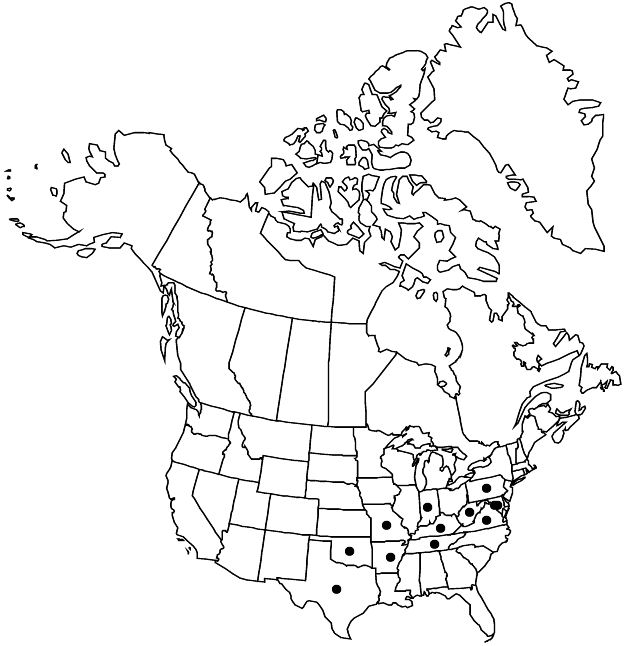Difference between revisions of "Vitis rupestris"
Linnaea 21: 591. 1848.
FNA>Volume Importer |
imported>Volume Importer |
||
| (4 intermediate revisions by 2 users not shown) | |||
| Line 16: | Line 16: | ||
|name=Vitis rupestris var. dissecta | |name=Vitis rupestris var. dissecta | ||
|authority=Eggert ex L. H. Bailey | |authority=Eggert ex L. H. Bailey | ||
| + | |rank=variety | ||
}} | }} | ||
|hierarchy=Vitaceae;Vitis;Vitis subg. Vitis;Vitis rupestris | |hierarchy=Vitaceae;Vitis;Vitis subg. Vitis;Vitis rupestris | ||
| Line 40: | Line 41: | ||
-->{{#Taxon: | -->{{#Taxon: | ||
name=Vitis rupestris | name=Vitis rupestris | ||
| − | |||
|authority=Scheele | |authority=Scheele | ||
|rank=species | |rank=species | ||
| Line 55: | Line 55: | ||
|publication year=1848 | |publication year=1848 | ||
|special status=Endemic | |special status=Endemic | ||
| − | |source xml=https:// | + | |source xml=https://bitbucket.org/aafc-mbb/fna-data-curation/src/2e0870ddd59836b60bcf96646a41e87ea5a5943a/coarse_grained_fna_xml/V12/V12_738.xml |
|genus=Vitis | |genus=Vitis | ||
|subgenus=Vitis subg. Vitis | |subgenus=Vitis subg. Vitis | ||
Latest revision as of 19:17, 5 November 2020
Plants sprawling to low climbing, shrubby, much branched. Branches: bark tardily exfoliating in plates; nodal diaphragms to 1 mm thick; branchlets terete, usually glabrous, sometimes sparsely hirtellous, growing tips enveloped by unfolding leaves; tendrils absent or only at distalmost nodes, soon deciduous if not attached to support, branched, tendrils (or inflorescences) at only 2 consecutive nodes; nodes not red-banded. Leaves: stipules 3–6.5 mm; petiole 1/2 blade; blade reniform, conduplicately folded, 5–10 cm, apex acute to short acuminate, usually 3-shouldered, rarely shallowly 3-lobed, abaxial surface not glaucous, usually glabrous, visible through hairs, veins and vein axils sometimes sparsely hirtellous, adaxial surface usually glabrous. Inflorescences 4–7 cm. Flowers functionally unisexual. Berries black, slightly glaucous, globose, 8–12 mm diam., skin separating from pulp; lenticels absent. 2n = 38.
Phenology: Flowering Apr–May; fruiting Aug–Sep.
Habitat: Gravelly banks, river bottoms, stream beds, washes, often calcareous soils.
Elevation: 70–500 m.
Distribution

Ark., D.C., Ind., Ky., Md., Mo., Okla., Pa., Tenn., Tex., Va., W.Va.
Discussion
Vitis rupestris once was widely scattered throughout most of its range, but now mostly is rare and may have been extirpated in many locations, apparently due to habitat loss. It is most common in the Ozark region of northern Arkansas and the southern half of Missouri, but is imperiled elsewhere (http://explorer.natureserve.org). It is persisting from cultivation in California and some other locations (J. Wen, pers. obs.; E. B. Wada and M. A. Walker, http://ucjeps.berkeley.edu/cgi-bin/get_IJM.pl?tid=48433). Reports from Illinois were based on misidentifications (R. H. Mohlenbrock 2014). The species was used to develop many grape hybrids due to its resistance to disease (J. Gerrath et al. 2015)
Selected References
None.